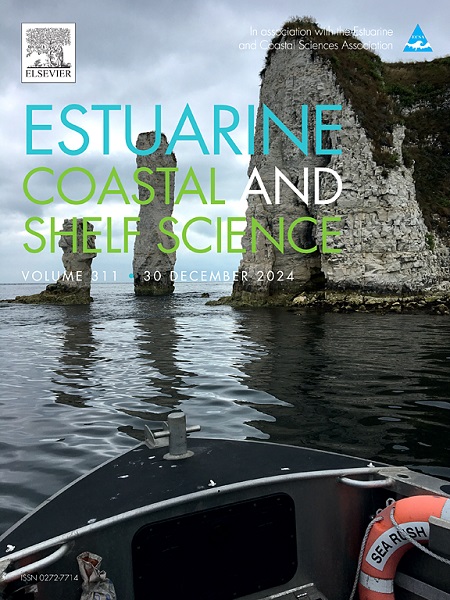Where were the Caribbean mangroves during the Last Glacial Maximum? A preliminary microtopographical appraisal
IF 2.6
3区 地球科学
Q1 MARINE & FRESHWATER BIOLOGY
引用次数: 0
Abstract
During the Last Glacial Maximum (LGM), when global sea levels dropped by ∼132 m, the Caribbean continental shelf was fully exposed, which drastically reduced the flat topographical habitat necessary for mangrove growth. It has been proposed that mangroves survived in flat microsites beyond the shelf break and later expanded from these microrefugia to their current distribution after the LGM. However, this hypothesis remains untested. This study aims to identify potential refugia by locating flat areas around the −132 m isobath using Global Multiresolution Topography (GMRT) images. A significant ∼200-km-long potential refugium was identified on the northern Trinidad (NT) shelf, along with several scattered kilometer-scale microrefugia near the Cariaco Basin (CB) in northeastern Venezuela. Additionally, two isolated prospective microrefugia were detected in northern Colombia (NC) and western Hispaniola (WH). The remaining LGM Caribbean coasts were considered unsuitable for mangrove growth. The NT refugium, along with the CB microrefugia, may have served as the primary sources for subsequent mangrove expansion. This expansion was likely facilitated by postglacial sea-level rise and the SE-NE Caribbean Current (CC), which would have acted as a major agent for propagule dispersal. This microtopographical survey not only supports the microrefugial hypothesis but also narrows the focus to the most promising areas, significantly reducing the time, effort and resources required for future seismic and coring campaigns.
末次盛冰期加勒比海的红树林在哪里?初步显微地形鉴定
在末次盛冰期(LGM),当全球海平面下降约132米时,加勒比大陆架完全暴露,这大大减少了红树林生长所必需的平坦地形栖息地。有人提出,红树林在陆架断裂以外的平坦微生境中存活,后来从这些微避难所扩展到LGM后的当前分布。然而,这一假设尚未得到验证。本研究旨在通过使用全球多分辨率地形(GMRT)图像定位- 132米等深线周围的平坦区域,以确定潜在的避难所。在特立尼达(NT)北部大陆架上发现了一个重要的~ 200公里长的潜在避难所,以及委内瑞拉东北部卡里亚科盆地(CB)附近的几个分散的公里尺度的微避难所。此外,在哥伦比亚北部(NC)和伊斯帕尼奥拉岛西部(WH)发现了两个孤立的潜在微避难所。其余的LGM加勒比海海岸被认为不适合红树林生长。北侧红树林和北侧微保护区可能是随后红树林扩张的主要来源。冰川后海平面上升和东南向东北方向的加勒比海洋流(CC)可能促进了这种扩张,这将成为繁殖体扩散的主要媒介。这种微地形调查不仅支持了微避难假说,而且将焦点缩小到最有希望的区域,大大减少了未来地震和取心活动所需的时间、精力和资源。
本文章由计算机程序翻译,如有差异,请以英文原文为准。
求助全文
约1分钟内获得全文
求助全文
来源期刊
CiteScore
5.60
自引率
7.10%
发文量
374
审稿时长
9 months
期刊介绍:
Estuarine, Coastal and Shelf Science is an international multidisciplinary journal devoted to the analysis of saline water phenomena ranging from the outer edge of the continental shelf to the upper limits of the tidal zone. The journal provides a unique forum, unifying the multidisciplinary approaches to the study of the oceanography of estuaries, coastal zones, and continental shelf seas. It features original research papers, review papers and short communications treating such disciplines as zoology, botany, geology, sedimentology, physical oceanography.

 求助内容:
求助内容: 应助结果提醒方式:
应助结果提醒方式:


